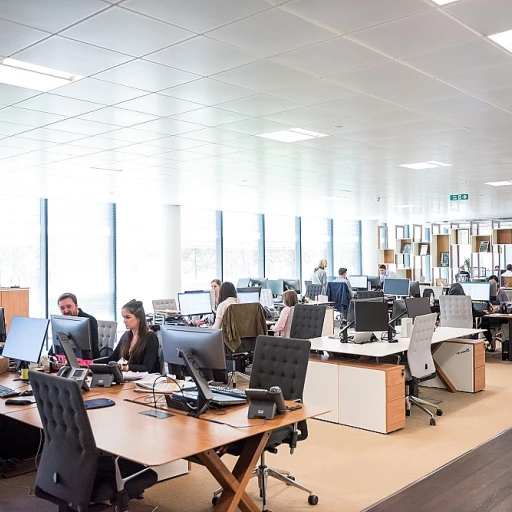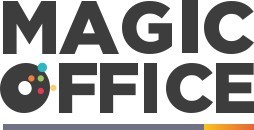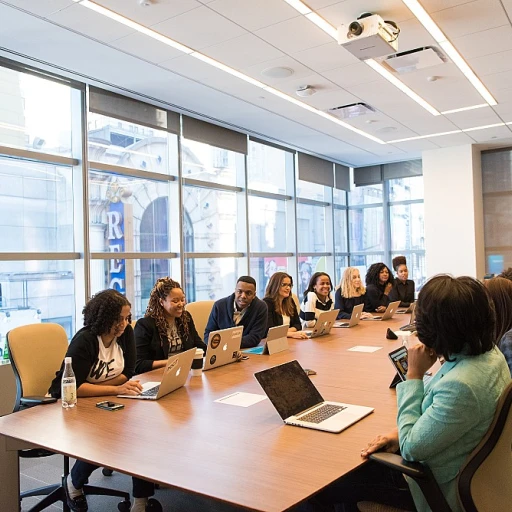
Understanding Today's Communication Environment
The Shift in Communication Norms
In recent years, the communication climate within Indian companies has witnessed significant changes. The rise of digital communication tools has diversified the way employees engage with each other and management. This evolution impacts how workplace communication is perceived and executed.
Digital Influence on Business Exchanges
Today's business environment leans heavily towards digital platforms, which require individuals to adapt quickly to new forms of language communication. The traditional reliance on face-to-face interactions is giving way to emails, instant messaging, and video conferencing. These tools shape how teams connect and collaborate, offering both opportunities and challenges in maintaining open communication.
The Importance of Communication Skills
With these technological changes, communication skills have become increasingly critical. Employees must develop proficiency in not just verbal but also nonverbal communication, understanding how to interpret nonverbal cues and convey messages effectively without the full context of in-person interactions. Cultivating these skills is essential for team members to foster an effective communication environment.
Active Listening in a Fast-paced World
In this rapidly evolving landscape, active listening is a skill that deserves emphasis. With the immediacy of digital interactions, there is a risk of diminishing the quality of communication if team members do not practice active listening. This includes being fully present in conversations, whether they take place in person or through a screen, to ensure that all parties feel heard and understood.
Cultural Nuances in Communication
Embracing Diversity in Corporate Interaction
In the intricate environment of Indian companies, cultural nuances play a pivotal role in shaping communication dynamics. Understanding and respecting diversity is indispensable for fostering an effective communication climate. As organizations increasingly feature a mosaic of cultural backgrounds, employees must develop cultural communication skills to navigate this complexity. Acknowledging the influences of language differences and nonverbal cues on workplace communication is crucial for promoting open interaction. Differences in body language and language communication can sometimes lead to misunderstandings or misinterpretations. Being aware of such intricacies empowers team members to engage more effectively across cultural divides. Cultural communication is also essential in enhancing employee engagement within teams. When people feel understood and accepted, they are more likely to be motivated and productive. Open communication fosters trust, allowing team members to express their ideas and concerns freely. Various strategies can aid in bridging cultural gaps in the business communication landscape. Active listening serves as a vital tool for understanding different perspectives, promoting empathy, and ultimately supporting effective communication strategies. Creating an environment that encourages transparent and honest dialogues helps in aligning diverse viewpoints towards common business goals. Cultural sensitivity in the communication workplace is an ongoing process. Companies must continually assess and adapt their approaches to meet the changing needs of their employees. This proactive stance helps businesses create an inclusive climate that respects individual differences, ultimately leading to a more cohesive and harmonious work environment. For more insights into how to enhance workplace communication, particularly in settings like call centers, you can explore strategies for enhancing email communication in Indian call centers, which address modern challenges and opportunities in business communication.Technological Advancements and Their Impact
Driving Communication Forward with Cutting-edge Technology
In the contemporary business landscape, technological advancements profoundly shape how companies communicate. The traditional methods of communication have been largely supplemented, and in some cases replaced, by digital tools that facilitate faster and more efficient exchange of information. These innovations influence workplace dynamics, cultural communication, and interpersonal interactions within organizations. Modern businesses are witnessing an integration of various platforms and software that streamline communication processes. This transformation enables employees to connect effortlessly, irrespective of geographical boundaries. The adoption of video conferencing tools, instant messaging apps, and cloud-based collaboration platforms enhance team engagement, enabling cross-cultural interactions among team members who may not share the same physical space. The increasing reliance on social media for business communication is another technological breakthrough that has revolutionized the workplace environment. This medium not only serves as a platform for marketing and public relations but also acts as a channel for internal communication, keeping employees informed and engaged. Well-structured social media strategies can lead to heightened employee engagement and open lines of communication across different levels of the organization. Moreover, modern technology emphasizes the significance of effective communication through nonverbal cues. Video calls and virtual meetings require participants to be mindful of body language and active listening, which are essential elements of good communication. Consequently, the ability to adapt to these changes and develop effective communication skills becomes crucial for every person in the company. The digital age provides a plethora of tools that, when utilized correctly, can foster an open communication climate, allowing businesses to thrive in a globalized world. However, managing communication in this tech-centric environment comes with its own challenges. Ensuring productivity in communication workplace settings often entails balancing between technological tools and the need for privacy, as discussed in ensuring productivity and security.Challenges in Managing Communication
Handling Communication Obstacles
In today's rapidly changing business environment, communication challenges are manifold and diverse. One major issue is the growing diversity in the workplace. Employees come from varied cultural backgrounds, leading to the necessity for cultural communication skills. Understanding different nuances and body language can pose a challenge when aiming for effective communication. Cultural misunderstandings can easily arise if team members are not aware of such differences, leading to a less cohesive team environment.
Moreover, the generational differences in the workplace add another layer of complexity. Older employees might prefer traditional business communication methods, while younger team members lean towards digital and social media platforms for workplace communication. This disparity can hinder open communication and lead to a disjointed work atmosphere where not everyone is on the same page.
Overcoming Technological Barriers
While technological advancements have improved the way we communicate, they have also introduced challenges. The plethora of communication tools available, from instant messaging apps to video conferencing platforms, can be overwhelming. Employees may struggle with using these tools effectively, affecting their communication skills. Furthermore, over-reliance on nonverbal communication in virtual settings can sometimes lead to misinterpretations, as nonverbal cues like eye contact or body language are often subtle or lost entirely in digital communication.
Climate and Time Constraints
Effective communication often requires time and a conducive environment, both of which are often in short supply in fast-paced company settings. The constant pressure to deliver timely results can limit opportunities for good communication and active listening, which are essential for team cohesion. Creating an open communication climate can encourage employee engagement and foster a positive workplace communication environment. Still, it requires deliberate effort and strategic communication strategies to overcome these time constraints.
Strategies for Effective Communication
Approaches to Strengthening Workplace Dialogue
Navigating the intricate web of workplace communication requires more than a basic understanding of verbal exchanges. To foster an environment that supports productivity and employee engagement, it's essential to implement strategies that resonate with your company’s mission and the diverse cultural backgrounds of your team members. One pivotal approach is encouraging open communication. Cultivating a workspace where employees feel safe and valued to express their perspectives contributes to a positive business climate. This involves creating opportunities for all voices to be heard and actively encouraging participation from those who may typically remain quiet. In parallel, nurturing good communication skills among employees is crucial. Regular training sessions focused on language communication and active listening can enhance how employees communicate, both verbally and nonverbally. Understanding nonverbal cues is especially significant in a multicultural setup, where body language and other forms of nonverbal interaction might differ. Practical Strategies:- Provide regular workshops that focus on cultural communication and cross-cultural education.
- Implement team-building activities that promote collaboration and break down communication barriers.
- Foster a feedback-friendly environment where constructive criticism is welcomed and seen as an opportunity for growth.
- Utilize digital tools for nonverbal communication and explore channels like social media to ensure messages reach all employees effectively.













